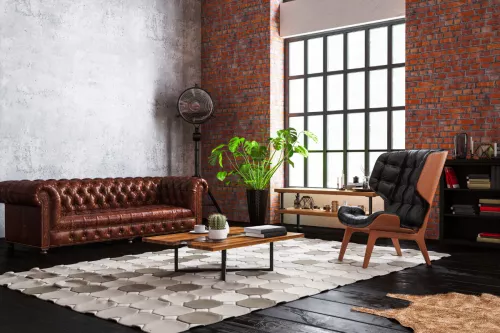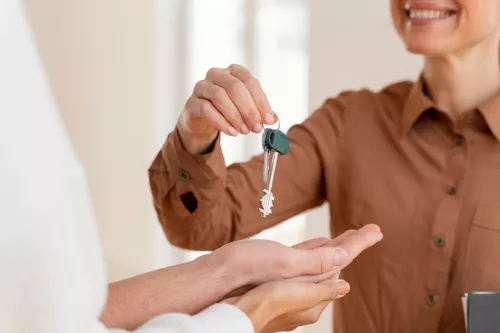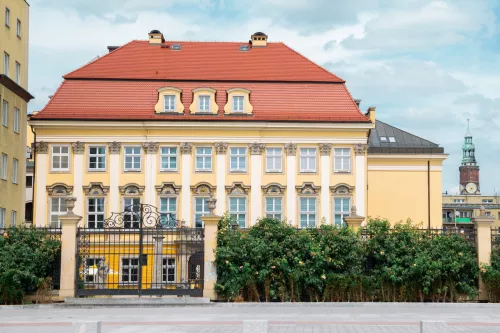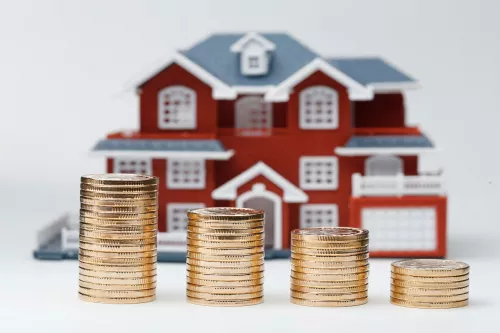The enchanting allure of Spanish style homes extends far beyond their captivating exteriors, delving into the intricacies of interior design that truly embody the spirit of this architectural wonder.
Evoking images of sun-drenched Mediterranean summers and expansive, welcoming estates designed for gatherings, Spanish style interiors offer a lively and evolving canvas that blends a diverse array of decorations, color palettes, and designs.
In this exploration, we will delve into the essence of Spanish style interior design, uncovering its defining characteristics, the vibrant colors that bring it to life, its modern adaptations, and practical tips for infusing your living spaces with the warmth and charm of Spanish flair.
What is Spanish Style Interior Design?
Rooted in the Mediterranean's rich heritage, Spanish style interior design is a beautiful fusion of Spanish and Moorish elements, creating an ambiance that's both rustic and elegant.
This design ethos is celebrated for its warmth and inviting nature, characterized by an earthy palette and traditional motifs that reflect Spain's rich cultural tapestry. From intricate floral and geometric patterns adorning textiles and wrought ironwork, these designs infuse spaces with depth and a sense of heritage.
The color scheme, inspired by the Mediterranean landscape, blends warm earth tones with the sea's blues and greens, creating a lively yet harmonious setting. Furniture in Spanish interiors is notable for its sturdy craftsmanship and natural fabric upholstery, enhanced by decorative details. Lighting, crucial in shaping the ambiance, relies on wrought iron and carved wood fixtures to cast a warm, inviting glow.
Characteristics of Spanish Interior Design

Achieving a Spanis style aesthetic in a home involves incorporating distinctive features and elements that resonate with the rich cultural heritage and architectural traditions of Spain. While there's no strict blueprint, certain recurring themes embody the essence of Spanish design:
Tiered Structure
Spanish style homes often boast multi-level layouts, adding dimension and interest to the architectural design.
Expansive, Arched Windows
Large, curved windows not only serve as a focal point but also invite ample natural light, enhancing the openness of the space.
Stucco or Adobe Walls
The use of stucco or adobe for walls lends an authentic, earthy texture reminiscent of traditional Spanish architecture.
Decorative Columns and Pilasters
These elements, often found adorning exterior walls, add a touch of classical elegance and structural beauty.
Emphasis on Natural Materials
Incorporating wood and stone throughout the home emphasizes a connection to nature and adds warmth and character.
Intricate Ironwork
Ornamental ironwork, found in stair railings or balcony grilles, introduces a delicate balance of strength and artistry.
Frescoes and Murals
Wall paintings, often depicting religious or pastoral scenes, serve as captivating visual narratives that enrich the home's aesthetic.
Vibrant Tiles and Mosaics
Colorful tiles, whether on floors, walls, or as accents, infuse spaces with lively patterns and hues.
Water Features
Fountains and other water elements bring a sense of tranquility and the outdoors inside, creating serene focal points.
Architectural Arches and Carvings
The use of arches and intricate wooden carvings in doors and furniture adds a layer of historical depth and craftsmanship.
Use of Adobe Bricks
Employing mud or adobe bricks in construction harks back to traditional building methods, offering thermal benefits and aesthetic appeal.
Outdoor Living Spaces
Verandas and exterior courtyards extend the living space outdoors, promoting a lifestyle of leisure and connectivity with nature.
Artistic Murals and Stained Glass
Murals enhance walls with artistic stories, while stained glass windows add color and light play to the interiors.
Earthen and Ornate Flooring
Tile floors, often in terracotta or decorative patterns, lay a foundation of rustic elegance.
Statement Fireplaces and Furnishings
Ornate fireplaces become central gathering spots, while heavy wood tables anchor dining and living areas with their solidity.
Contrasting Color Schemes
The juxtaposition of white or light-colored walls against dark wood floors creates a striking visual contrast.
Decorative Screens and Metalwork
Painted or carved wooden screens and wrought iron chandeliers infuse spaces with texture and historical references.
Robust Masonry and Woodwork
Chunky stone and brickwork, alongside wooden shutters, evoke the timeless charm of Spanish countryside homes.
Iconic Terracotta Roofs
The warm, earthy tones of terracotta tiled roofs are quintessentially Spanish, adding character and durability.
Greenery and Floral Accents
Vines, hanging baskets, and potted plants bring life and a touch of nature to the architectural landscape.
Spatial Grandeur
Tall ceilings and arched doorways create an airy, grand atmosphere, while tile mosaics add artistic flair and detail.
Colors of Spanish Style Homes
The color scheme of Spanish style homes, deeply rooted in nature and the Mediterranean landscape, features a palette of earthy tones such as terracotta, ochre, and dusty orange.
These warm hues serve as a foundational base, highlighted by vivid accents of blue, emerald green, and sunny yellow. This harmonious blend of colors not only mirrors the natural surroundings but also contributes to the welcoming and vibrant ambiance characteristic of Spanish interiors.
Modern Spanish Style in a Home
Modern Spanish style homes blend traditional elements with contemporary design principles. This modern interpretation includes cleaner lines, a lighter color palette, and a more minimalist approach while still incorporating key Spanish design elements like arched doorways, wrought iron fixtures, and decorative tiles.
How to Make My House Look Spanish?
Transforming your home into a Spanish haven involves incorporating specific design elements and materials:
Use Warm, Earthy Colors
Repaint walls with warm hues and add accents in vibrant Mediterranean colors.
Incorporate Terracotta and Hand-Painted Tiles
Use these for flooring or as backsplash in kitchens and bathrooms.
Opt for Rustic Furniture
Choose pieces made from dark, heavy wood with iron or copper detailing.
Add Wrought Iron Elements
Light fixtures, stair railings, and door hardware in wrought iron enhance the Spanish look.
Embrace Textural Contrast
Combine smooth stucco walls with rough wooden beams and terracotta floors for a true Spanish feel.
People also ask
Can I incorporate Spanish style in a modern home?
Absolutely! Modern Spanish style is all about blending traditional Spanish elements with modern design principles. Think clean lines, a lighter color palette, and minimalist decor paired with classic Spanish design features.
Are bold colors a must in Spanish style interiors?
While vibrant colors are typical, they're not a must. You can achieve a Spanish aesthetic with a more subdued color scheme by focusing on texture and material.
What's the best way to add Spanish flair to a small space?
Focus on key elements like colorful tiles, wrought iron accents, and rustic wooden pieces. Even small touches can make a big impact.
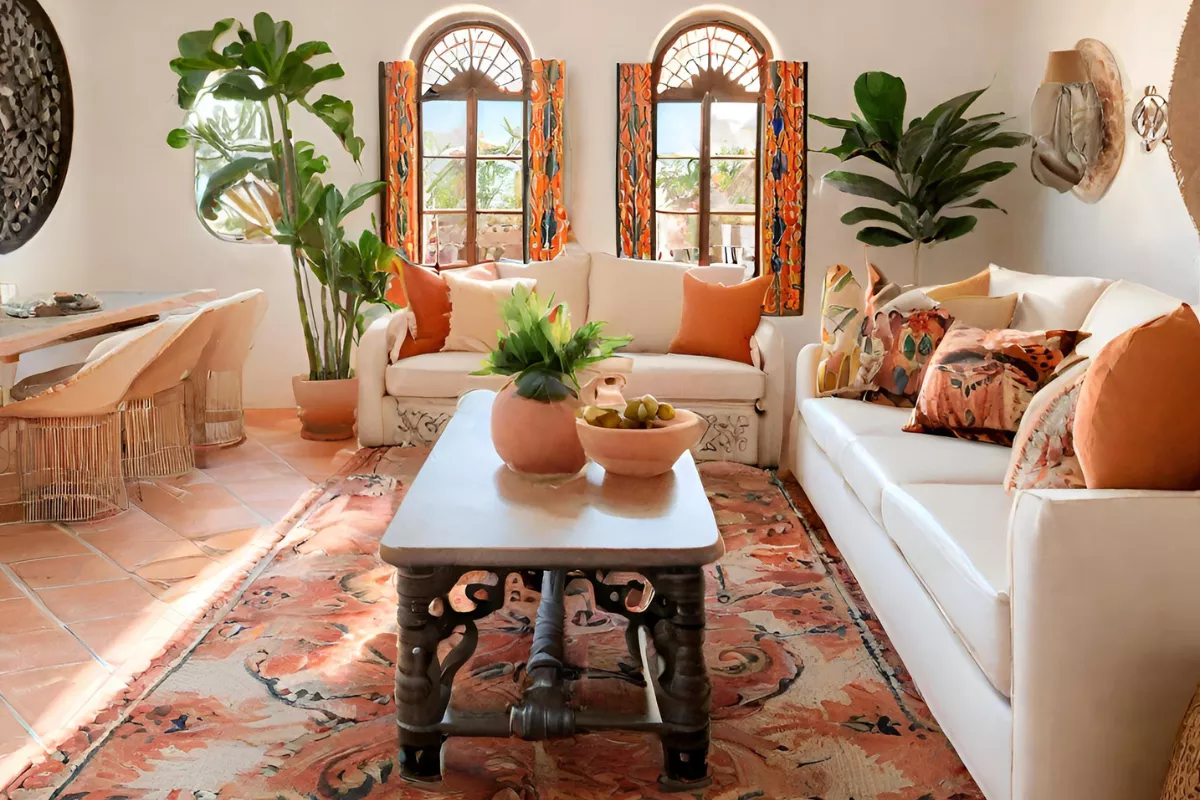
 Marcio Vasconcelos
Marcio Vasconcelos
